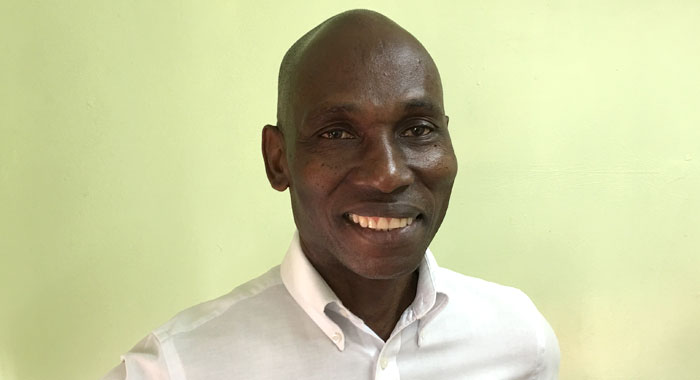The re-emergence of St. Vincent and the Grenadines Reparations Movement, which came into existence in 2005 as opposed to the government-appointed reparations committee formed in 2013, represents an essential development in the rebirth of civil society in this country.
The reparations movement represents a recommitment by some Vincentian patriots residing at home and abroad to wrest the reparations cause from the exclusive clutches of the government. The urgent desire is to anchor it within the civil society tradition from which so much good work related to consciousness-raising and national development was carried out.
The Reparations movement is committed to making timely and important interventions related to matters to assist, advance and complete the anti-colonial struggle which our people started following the conquest of our country in 1797.
The Reparations movement recognises that since the assassination of Paramount Chief Joseph Chatoyer in 1795, the exile of our Garifuna forebears and the conquest and enslavement of our homeland, the colonial masters have attempted to destroy our people’s will to resist colonial domination and oppression. The most basic colonial approaches have been to saturate our country with Euro-centric names and ideas. This cultural aggression is reflected in renaming persons and places within our country.
In the Black Power era of the 1960s and 70s, a big push was initiated to get our people to love themselves. Rather than fry our hair and imitate whiteness, a Black is Beautiful campaign was started. This campaign resulted in many activists wearing African and cultural garments, adopting African names and protesting symbols of colonial oppression and domination.
It was discovered that our indigenous people called our country Youlou and the Begos rather than the colonial St Vincent and the Grenadines. Some historians claimed the original inhabitants called the island Hairouna. The increasing connection with our Garifuna brothers and sisters, whose forebears were exiled after the conquest in 1797, revealed that at the time of the epic anticolonial battles led by Chatoyer, the country was known as Youreimi.
To rename is to reclaim and restore. The Reparations movement believes and recommends that our nation’s leadership begin a name-changing project intended to replace names associated with colonial conquest with those patriotic nationals whose contribution to national development must be remembered and honoured.
Therefore, the Reparations Movement offer the following list, which is not exhaustive but symbolic of the direction we need to go to break the colonial/neocolonial control of our homeland.
- Victoria Park, which for generations was the premier sporting ground in the nation, carried the name of Queen Victoria of England. During the first reparations conference in 2013, it was suggested that Victoria be replaced with Independence. This change will reflect a sharp turn away from our English colonial gaze and toward a more self-assured, forward-looking psyche.
- Queen’s Drive is a name given to a road that snakes through one of the most picturesque sections of our country, located just outside Kingstown. It is a solidly middle-class residential area. The area took on this name in 1966 when Queen Elizabeth 11 visited the country. The name Queen’s Drive should be replaced with one more fitting and reflective of who we are as a people. The suggestion is to rename the area/road Parnel Campbell Drive/village after the legal luminary who did so much to educate citizens about their rights through his Law and You programme, which aired for over 25 years.
- Princess Margaret Beach is recognised by tourists, travel and tour destination executives alike as one of the most beautiful beaches in the Caribbean and beyond. Located along the pristine waters of the Bequia and enjoyed by foreigners and locals, the beach was rechristened in 1960 after Princess Margaret honeymooned on the island. The beach should be indigenised to celebrate someone of note from the island. It certainly should not carry the name Princess Margaret or Tony Gibbons, another English man whose name was attached to the beach before the name changed in 1960.
- Petit Bordel, which means ‘little brothel’ in English, speaks to the disrespect and disdain that the French, English and other European enslavers and colonialists harboured for our country and its people. The fact that this name persists 43 years after our nation’s attainment of national independence is irrefutable proof that our leaders, especially those who represented the North Leeward constituency, are seized with a neo-colonial mentality that does not allow them to liberate their minds from mental slavery and fight for their humanisation.
Because of the role that marijuana played in the economic and infrastructural development of the area, we are convinced that the name ‘Nature’s Garden’ will represent a fitting rebuke to those who tried to name and shame us.
- Murray’s Road/Murray’s Village took its name from Charles Gideon Murray, a former colonial administrator who governed this land early in the 20th century. At the national level, Murray is notorious for passing laws prohibiting Spiritual Baptists from practising their religion and worshipping their God.
Between 1912 and 1953, Spiritual Baptists could go to jail for exercising their right to worship. Yet while some of us, according to Calypsoian Brother Ebony, have nothing, Murray, the arch racist and reactionary, is honoured with an entire village and a road.
Since prospective national hero Ebenezer Joshua lost out with the decommissioning of the ET Joshua airport, the Reparations Movement suggest that, in his honour, the stretch of highway from Forrester’s Corner to Massy Stores at Arnos Vale be renamed E.T Joshua’s Drive.
- Young’s Island is named after the enslaver and colonialist William Young. During the first Kalinago/Garifuna war in 1763, the British claimed the entire country. Young was president of the commission established to sell our people’s land. He was one of the key colonial figures that led the effort to break our resistance and establish slavery here. At the time of his death, he owned about 900 enslaved Africans.
How about Duvalier for Young, a name that points to one of the strongest defenders of our fight against conquest, slavery and colonisation?
No part of our land or seascape should bear the name of these enslavers and colonialists. We have many outstanding citizens whose names could and should grace our towns, villages and roadways. Let the renaming, reclaiming and restoring begin.

